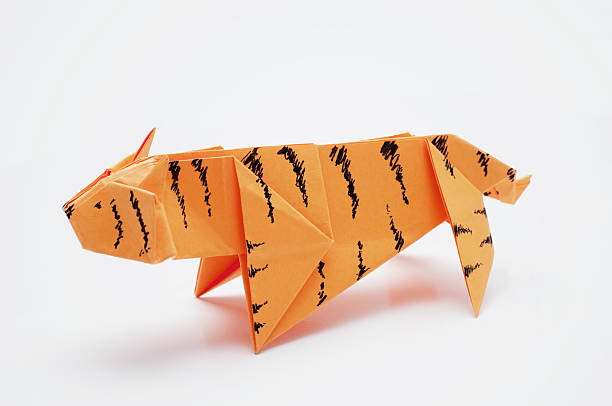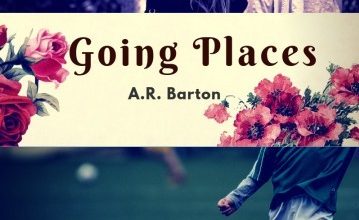
The Tiger in the Menagerie, a poem in Emma Jones’ collection of poems The Striped World is a unique composition which opens gates of multiple interpretations for a reader due to its rich figurative language. At the outset, it appears to be a simple tale about a magnificent yet mysterious tiger which enters and exits a menagerie like a magical act. It is up to the readers to decode its movements and decide its purpose.
The speaker of the poem is a third-person limited spectator who observes the tiger’s movements and conveys them to the reader. The free verse supports the imagery Jones attempts to bring forward to allow a smooth flow of thoughts.
Tiger in the Menagerie | Summary and Analysis
No one could say how the tiger got into the menagerie.
It was too flash, too blue,
too much like the painting of a tiger.
The poem begins on a note of uncertainty and wonderment that the speaker conveys about the tiger’s entry into the menagerie which is a disruption to the existing set-up. The ferocious beast is unlike its species which rips it off authenticity and reality. It appears to be a painting of a tiger rather than the animal itself because of its speed and colour characteristics. Its quick movements and disguising technique bewilder everyone. The repetition “too” creates the atmosphere of unfamiliarity with a creature of the kind the speaker narrates about and the difficulty of acceptance of its existence.
Tiger in the Menagerie | Analysis, Lines 4-13
At night the bars of the cage and the stripes of the tiger
looked into each other so long
that when it was time for those eyes to rock shut
the bars were the lashes of the stripes
the stripes were the lashes of the bars
and they walked together in their dreams so long
through the long colonnade
that shed its fretwork to the Indian main
that when the sun rose they’d gone and the tiger was
one clear orange eye that walked into the menagerie.
The night, as the speaker continues, allows the cage bars and the stripes of the tiger to mix with each other rendering a camouflage effect. The dinginess of the cage is shown in the proximity of the cage bars and the stripes of the tiger which results in lashes on its skin. Lashes denote violence and torture. Also, they personify as eyes looking at each other and when the time ticks to shut the cages in order to lock the animals with a simultaneous shutting of the eyes of the animals to sleep.
The bars and the lashes become one. There is a mystical dreamy imagery the speaker encourages us to imagine. The personification continues in the walk of the bars and the stripes together in unison through the luxurious colonnade whose fretwork sheds the Indian main i.e. the Ocean in archaic language. Thus, the menagerie must be in a palace or a part of an influential design. The tiger is a wild animal itself and becomes a subject of brutality at the hands of the cage guards. To unite with the bars may voice out the tiger’s aim to revolt back. The following morning the sun’s arrival puts an end to the dream sequence and the tiger’s eyes transform into “one clear orange eye” which is a metaphor for the sun at dawn. The tiger now settles in its natural colour as it walks into the menagerie.
Tiger in the Menagerie | Analysis, Lines 14-19
No one could say how the tiger got out in the menagerie.
It was too bright, too bare.
If the menagerie could, it would say ‘tiger’.
If the aviary could, it would lock its door.
Its heart began to beat in rows of rising birds
when the tiger came inside to wait.
Contrasting with the opening lines, the last stanza leaves the speaker pondering over the means by which the tiger gets out of its cage in the menagerie. Cyclicity in the structure gives the poem a definite form. Now, the tiger is “bright” and “bare” (alliteration) conforming to its popular traits. The free tiger roams out among the other scared fauna. The menagerie as a whole would wish to call out to the tiger and alert all the animals but their fear sentences them to silence and snatches their courage. The birds in the aviary would wish to lock up their area of residence in order to protect themselves.
As the tiger enters the aviary, the birds start flying with an anxious heartbeat. But the tiger just waits and the poem culminates on an ambiguous note leaving no hints about the tiger’s next move. Possible interpretations of the tiger’s venture into the aviary include his intention to either hunt them or to aspire to fly freely as the birds. It might be craving for freedom – any animal in a cage would. The violent undertones at the end symbolise the universal truth that any living being cannot go astray from its species’ defining qualities. A tiger is a wild hunting beast never in the mood to let go of its prey. Similarly, every human being is liable to act according to their nature which would spring up in vulnerable situations despite great efforts to suppress or conceal it.



